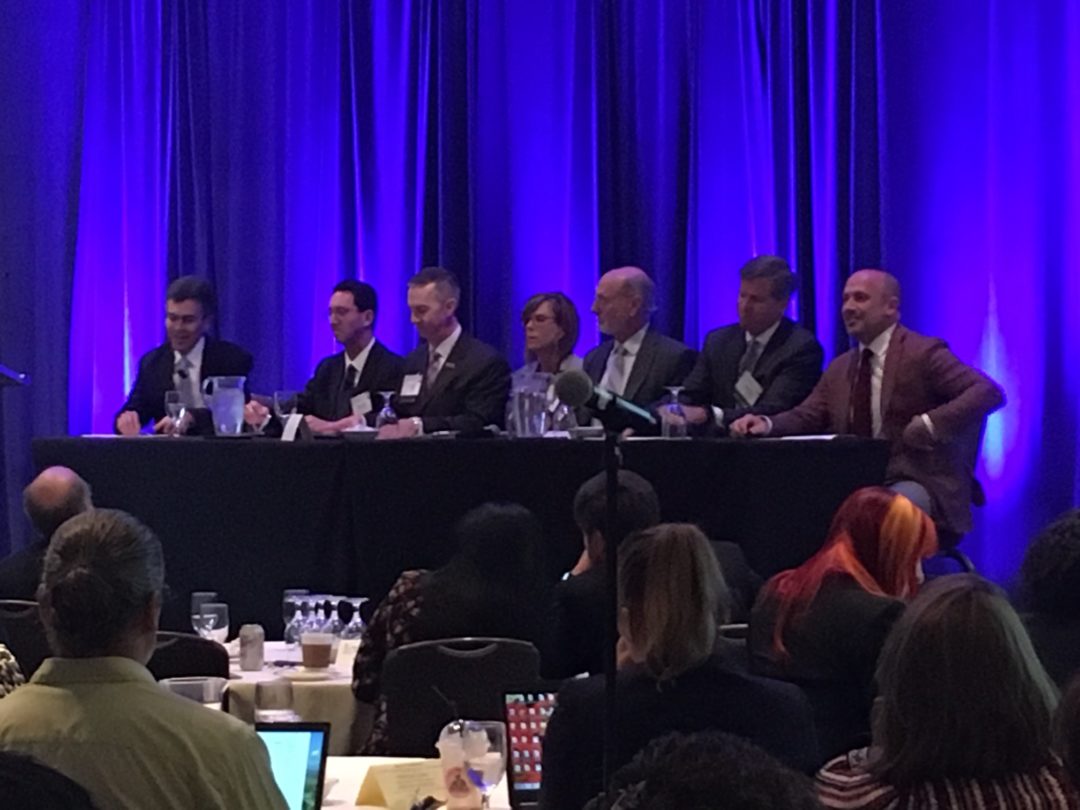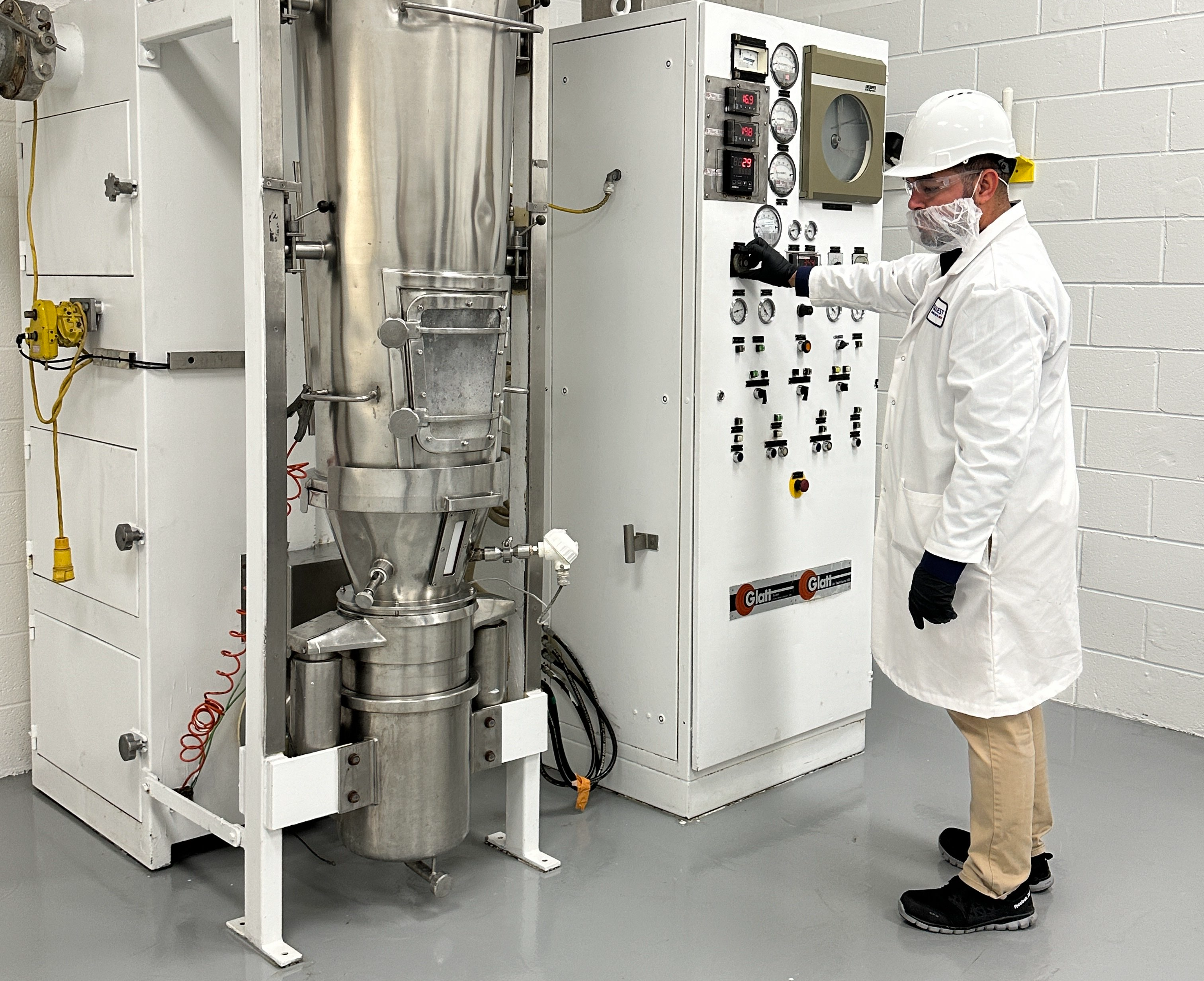
Dietary Supplements Regulatory Summit: Industry/FDA Unite; Discuss Future of DSHEA

FDA: “If you have questions, we’re here.”
Three of the four speakers from FDA—Frank Yiannas, deputy commissioner for food policy and response; Sibyl Swift, Ph.D., special assistant at the Office of Dietary Supplement Programs (ODSP); and Steven Tave, director of the ODSP —discussed their “open-door policy.”
Yiannas, in his Keynote Address, said: “My door is always open to you. The FDA’s door is always open to you. If you want to talk about a new product or ingredient, if you have questions, we’re here.”
Swift said, in “Dietary supplement enforcement metrics, trends, and lessons learned”: “In fiscal year 2018, 53% of complete new dietary ingredient notifications were acknowledged with no objections, the highest percentage in the past five years. There were 27 pre-NDIN meetings, and out of those, 70% were acknowledged with no objections.” She implored the audience to increase communication and conversation, and requested that attendees note ODSP’s email:odsp@fda.hhs.gov.
Steven Tave, director of the Office of Dietary Supplement Programs (ODSP), again noted that FDA has an open-door policy in his talk, titled “FDA’s new strategies to modernize dietary supplement regulation,” and issued a call for information as he discussed the Dietary Supplements Advisory List, a list of ingredients FDA is investigating as unsafe or unlawful. “We want responsible Industry to know what FDA is doing, but we have to take time to do things right, so we move slowly. If you have information about an ingredient on the advisory list—regarding its safety or lack thereof—please send it in, so that we can come to a conclusion about the safety and lawfulness of the ingredient.”
Tave’s talk was focused on FDA and Industry progressing—together. He observed that “It’s still somewhat novel that we’re able to talk in the same way about our shared goals.” He reassured attendees that, while Scott Gottlieb, M.D., former commissioner, has departed from the agency, his goals still stand: “His statement regarding our intentions to work with and update the Industry was an FDA statement. It described FDA work.”
Regarding DSHEA and the updating thereof, Tave specified that he has no intention of scrapping it: “Progress means improving upon the original idea,” he stressed, “Not disposing of it.” He said that FDA "embraces" the balance between safety and access that DSHEA struck, but added: "It's incumbent upon us to adapt [to a changing world]—it would be irresponsible of us not to. The original vision endures, but I haven't heard anyone say that it's working perfectly, as it was intended. If there is anything we can do to strengthen that framework, we need to do that."
Industry Thoughts: “We can work together.”
Industry leaders were open to collaboration. Larisa Pavlick, VP of global regulatory & compliance at the United Natural Products Association (UNPA), suggested: “We can work together to train investigators and improve the consistency of audits.” Steve Mister, president and CEO of the Council for Responsible Nutrition (CRN), agreed, and put forth the opinion that ODPS should have double the current budget, noting that inspections, training, enforcement, and creating regulations and guidelines requires resources: As per Swift, and as Tave reminded the panelists, ODPS only has 24 full-time employees. In a $40 billion industry, that means that there's one FDA employee per $1.67 billion worth of products.
Daniel Fabricant, Ph.D., CEO and president of the Natural Products Association (NPA), felt that the FDA would be better served by keeping its feet in the present. While it would be great to have more resources in the future, he agreed, FDA and the Industry have to keep moving forward. “What can be done now, with the tools that we have? There’s no sense designing the perfect firetruck while the building is burning down,” he said. “Pick up a bucket.”
Industry members were equally divided on the future of DSHEA. Scott Melville, president and CEO of the Consumer Healthcare Products Association, noted during the panel that "It seems to me that everyone in the industry thinks that DSHEA can be improved upon, and I'm happy that we're all here talking about it."
Dr. Fabricant disagreed: "I don't think that everyone agrees that there's a unified view of what we all want."
The Industry's message is clear: We need to get working, and we need to work together to ensure that customers have access to a range of safe supplements.
A Sore Spot: Probiotic Labeling
One point of contention—besides CBD—was probiotic labeling. The two talks addressing it—one given by Robert Durkin, R.Ph., deputy director at ODSP, and the other given by Paul Bolar, VP of regulatory affairs at Pharmavite LLC—were given 50 minutes, including time for questions.
Durkin noted that, while FDA requires the quantity of each ingredient to be listed by weight, there is nothing stopping manufacturers from listing CFUs as well—and, in fact, FDA has released guidelines for manufacturers to do just that.
Bolar, however, pointed out that listing both can be confusing: “Weight measurement does not necessarily correlate with CFU—two products, both with 200mg of probiotics, can have wildly different CFU counts. Different organisms have different weights, so weight is not an accurate point of comparison.” He added that weight doesn’t distinguish between live and dead.
Another important point: Bolar feels that CFU counts given on packaging should be at the time of expiry, not at the time of manufacture. And there, too, he sees an issue with weight: “Weight doesn’t change,” he said. “It’ll be the same at the time of manufacture as it is at the end of its shelf life. CFU count can and does change, and CFU labeling can account for that.”
Bolar and Durkin agreed that CFU labeling is not perfect. Brian Craig, CEO at Essential Formulas, asked if CFU should really be our end goal: “CFUs can be inaccurate,” he said. “Different technicians or testing methods can get different counts on the same lot.”
Durkin agreed that this is part of why FDA is unwilling to switch entirely to CFUs: “It’s a lot of work, and we’re not convinced that it’s worth it.”
Bolar agreed that there are newer, better measurement methods, including flow cytometry and real-time PCR, but that they’re not widely adopted or recognized, and they don’t correlate with the well-known CFU measurement.
Keep an eye on this area—FDA may move slowly, but there is likely to be change here, eventually.

The editorial team at WholeFoods Magazine has decades of experiences reporting on natural products industry news, trends, and more. This national, monthly business-to-business magazine has been published continuously for nearly 40 years (the magazine was founded in 1977, and has been owned by Wainer Finest Communications since 1984). It is the longest-tenured media outlet of its kind in the natural products industry. The editorial focus at WholeFoods Magazine is, and always has been, on informing and educating members of the natural products industry.
The Magazine
Information
About Us
NOTE: WholeFoods Magazine is a business-to-business publication. Information on this site should not be considered medical advice or a way to diagnose or treat any disease or illness. Always seek the advice of a medical professional before making lifestyle changes, including taking a dietary supplement. The opinions expressed by contributors and experts quoted in articles are not necessarily those of the publisher or editors of WholeFoods.







